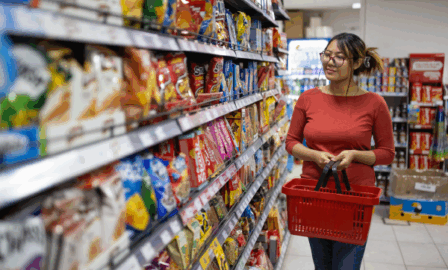Adapting Your Trade Spend During COVID
The coronavirus resulted in an unprecedented change in consumer, retailer, and manufacturer behavior. Have you noticed that grocery prices are increasing and there are far less in-store retail promotional events? Year over year, sales managers were typically planning their promotions based upon previous year budgets and tactics with some optimization to drive revenue and profit objectives. The unprecedented change called for organizations to adjust their overall marketing and trade spend approaches to accommodate the changing shopper and retailer landscape. Three ways CPG organizations are reacting during this time are by 1) reallocating traditional retail channel promotion spend to alternate channels 2) shifting promotional dollars internally to other business functions and 3) returning dollars back to the bottom line.
Channel Shifts
Consumers are now being strategic and selective with their shopping visits. In-store impulse buys are no longer a reliable method to drive sales and ROI as consumers are trying to minimize the time they spend inside stores as well as save money during the financial crunch. As a result, promotional events need to be more surgical and targeted as foot traffic concentrates within certain retail channels. In terms of channel growth, food retail has seen a steady increase while the convenience channel has been idle. If sales have dropped in any retail channels, those promotion dollars committed are not driving the incremental volume for which we’d hoped. It would be wise to re-allocate those dollars to a channel that is seeing success and to recover some lost effectiveness of your trade spend.
It’s extremely important to know the new intersection of your industry and most relevant (or primary) brick & mortar sales channels. Understand that consumer shopping behavior has shifted across both industries and channels. Food service and beverage on-premise sales dropped when restaurants and bars closed nationwide in March but has since seen a slight increase as states are slowly re-opening. In the meantime, this has increased the dependency on off-premise sales. Health and beauty has seen an influx of online sales as manufacturers are developing creative ways to enhance the online shopping experience. Analyze the before and after of all sales channels where brands are selling. Invest in those that have seen success to drive incremental sales to accommodate for the dip in others and recognize the need to change focus from on-premise to off-premise.
Reallocate from Brick & Mortar to Digital
It’s no secret that online ordering, curbside pickup, and delivery methods are ever more booming today than ever. The industry had been shifting towards direct to consumer for a while but with the risk of COVID among us, we’ve seen this offering boom in the past few months. It may be worth shifting trade dollars and invest in a direct to consumer offering during this time. Consumers are resorting to Amazon or any service that can replicate the speed of “running to the store.” Since foot traffic in other channels have decreased, a shift in allocations can free up some trade spend that can in turn be invested in a digital option to drive sales.
Reinvest Internally – Preserve Profit
Your organization has budgeted trade promotion dollars, sales managers have committed to spend them at retail, but that doesn’t always mean you should. Annual plans for 2020 were built in 2019 on assumptions unforeseen at the time, forcing sales managers and retailers to re-plan several times since. If sales revenue has taken a hit, your finance department may need to return some portion of committed but unspent and uncommitted promotion dollars back to the bottom line. While not a popular action to take amongst both manufacturers and retailers, this may be the best option in the short term to weather the COVID storm. If your organization doesn’t already have one, utilizing a flexible revenue growth management strategy will be beneficial especially during this unprecedented time. If you don’t have an integrated revenue management process across your organization, you need one now more than ever.
Trade Spend Considerations for the Future
The big unknown at this point is, will the shift in budgeting and trade spend be permanent in some form or its entirety? Based upon recent reports and trends, this situation could potentially last 12 months or more. If that happens, consumers will continue some adapted shopping behaviors even after living conditions have gone back to “normal.” Instead we may see the current environment a new normal. The key is to be ready for anything moving forward. Sales and Marketing functions need a funding structure that is flexible to execute so you are not left with committed dollars locked up in unproductive channels. Rebalance your trade strategy investments to reflect the growing dependency on digital offerings and consider this a long-term investment to develop consumer engagement. And lastly, monitor the channels that saw hits during COVID to see if consumers are headed back to their normal purchasing routine as time goes on. If that’s the case, a flexible trade strategy and funding structure will allow shifting back to promoting in those channels again.
As we work together to think through what the future of CPG sales looks like now and in the short term, the landscape continues to evolve every day. Clarkston’s trade promotion consultants have front line knowledge of the successful actions manufacturers can take to shift promotion investment. Are you a business who wants to proactively invest in the future of retail sales or make changes to your strategy to ensure you’re prepared for a changing market?


